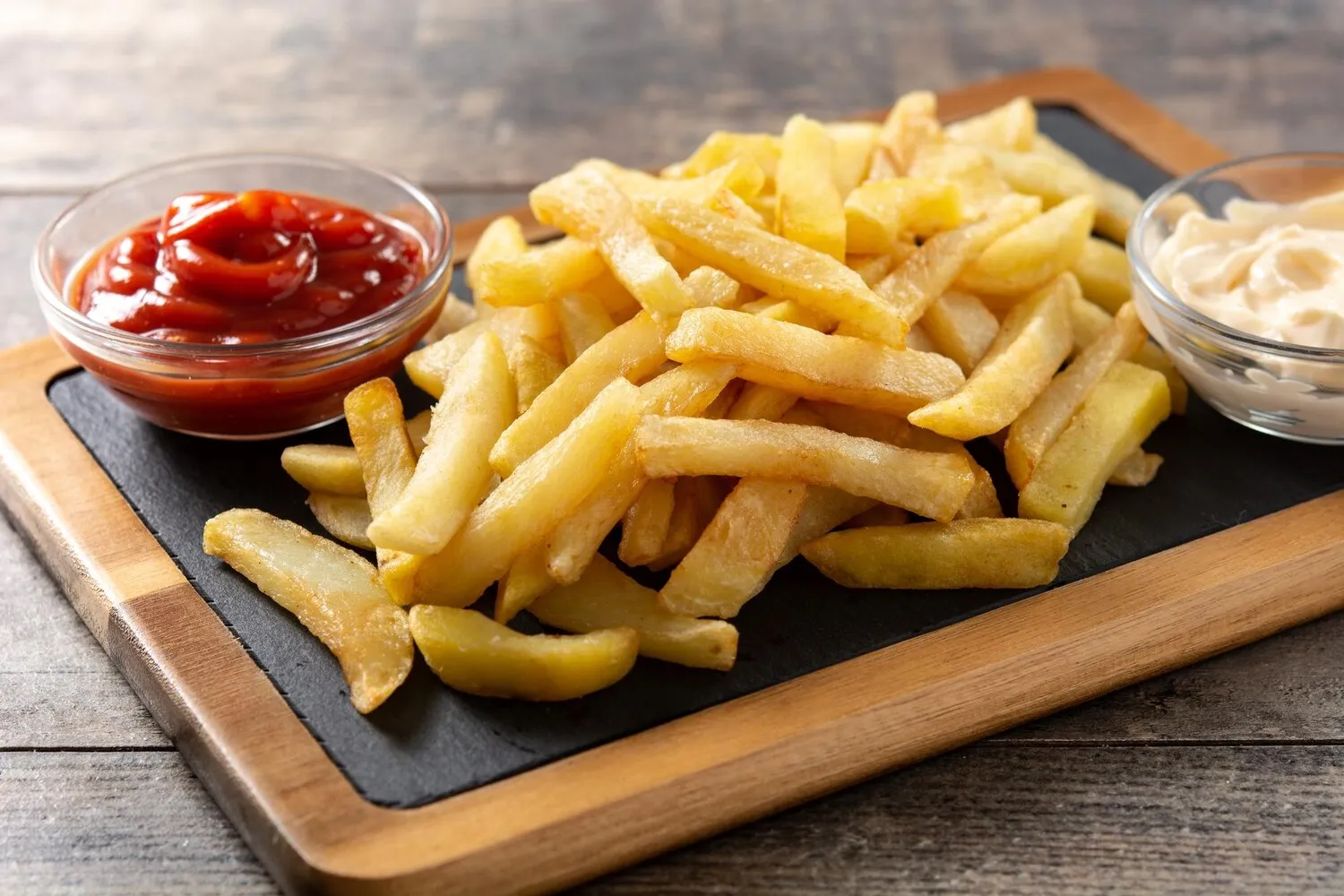
Mandioca Frita (Fried Cassava)
Crispy and golden fried cassava, a popular side dish in Brazil, often served as an accompaniment to meat dishes.
Nutrition Facts
* The % Daily Value (DV) tells you how much a nutrient in a serving of food contributes to a daily diet. 2,000 calories a day is used for general nutrition advice.
Rancho Catarinense
Cassava, also known as mandioca or yuca, is native to South America and has been a staple food for indigenous populations for centuries. Its cultivation spread throughout the continent before European colonization. The Portuguese introduced cassava to other parts of the world, including Africa and Asia. Frying, as a cooking technique, likely emerged from European influences adapting to local ingredients. Mandioca frita, therefore, represents a fusion of indigenous ingredients and culinary techniques adapted over time.
Mandioca frita is deeply ingrained in Brazilian culinary culture, often seen as a versatile and accessible comfort food, appearing in homes, restaurants, and street food stalls across the country.
Popular Side Dish
It is a very common and popular side dish to feijoada (black bean stew with pork) and grilled meats like churrasco. It's the equivalent to french fries in North American Cuisine, making the meat a more hearty dish.
Street Food Staple
Mandioca frita is a common street food, often sold from food carts and kiosks, providing a quick and affordable snack option.
Regional Variations
While the basic recipe is consistent, regional variations exist in terms of seasoning, accompanying sauces, and presentation. Some regions might prefer specific types of cassava or frying techniques.
Mandioca frita offers a simple yet satisfying flavor profile centered around the earthy and slightly sweet taste of cassava, enhanced by the crispy, golden-brown exterior achieved through frying.
The inherent flavor of cassava is mild, slightly sweet, and subtly nutty. When fried, the exterior develops a delightful crispness, contrasting with the softer, starchier interior. Depending on the oil used for frying and any added seasonings (such as salt), the overall flavor can range from clean and neutral to savory and slightly salty. The texture is a key component, with the crispy exterior offering a satisfying crunch.
Cassava Selection
Choose firm, unblemished cassava roots. Avoid those that are soft, discolored, or have any signs of spoilage. Fresh cassava is critical for optimal texture and flavor.
Double Frying Technique
For extra crispiness, consider a double-frying method. First, fry the cassava at a lower temperature to cook it through. Then, fry it again at a higher temperature to achieve the golden-brown color and crispy exterior.
Soaking Cassava
Soaking the cut cassava in water before frying can help to remove excess starch, leading to a crispier result and prevent it from sticking together during frying.
Drying Cassava
Make sure the cut and soaked cassava pieces are well-dried before placing into the hot oil. This will reduce the amount of splattering and allow for a more even crisp.
Explore additional Side Dish dishes and restaurants
Explore Side DishDiscover top dining spots and culinary experiences in Feira de Santana.
Explore Feira de SantanaLearn more about the food culture, restaurant scene, and culinary heritage of Brazil.
Explore Brazil
